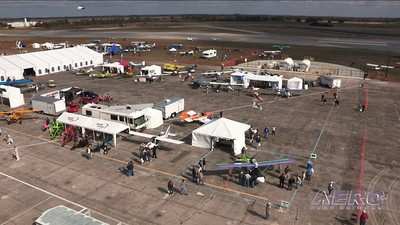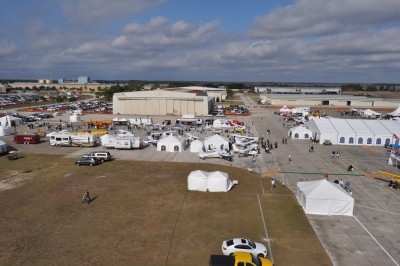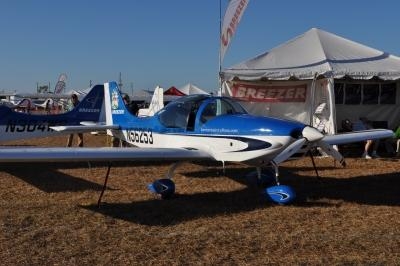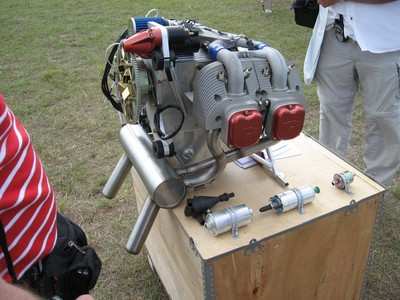Some Exhibitors At Sebring Light Sport Expo Saw Some Hefty
Price Hikes
By David Juwel
Vendors attend fly-in’s because they offer an opportunity
to reach large numbers of people that might become potential
customers. However, one problem vendors have is the escalating
greed of the event organizers. Every year event organizers either
raise prices, or they find more places to attach fees, or both. It
finally reaches a point where the vendor no longer realizes a
profitable return due to the exorbitant expense of exhibiting, so
they abandon that particular event.

This is one of the reasons why the Sebring US Sport Aviation
Expo was created. Vendors wanted a place to reach out to the public
at a fair price, and it worked for several years. But this year,
reportedly, things changed. In some cases, prices were raised
dramatically. To exhibit in the prime area of the entry gate,
according to some reports and positions, the price went from
hundreds of dollars to thousands of dollars. Other prices were
reportedly raised too.
As I talked with various vendors at the Expo this year, I
enquired about how the event was going for them. What I heard was
(in part) the following:
- A displeasure in the price increases.
- Increased expenses with less benefit.
- Where the earlier organizers maintained a strong relationship
and provided good customer service to the vendors, the new event
organizers pretty much ignored them.
- Promises made by the organizers were unfulfilled.
- The early vendors who got the show off the ground and helped to
establish the event were not shown the respect they deserve.
- Some vendors see the handwriting on the wall and they’re
already discussing whether they will return or not -- some of
these, if absent, will be VERY noticeable.
But frankly, these problems are inevitable because each Aviation
Event is an organized business that, like any business, continues
to seek ways to become more profitable. Unfortunately, there comes
a tipping point where the vendor and the public start being gouged.
That’s when vendors start dropping out. But this
doesn’t stop the gouging because the event organizers simply
raise the prices even more to offset the loss of revenue by those
who have dropped out.
In my opinion, the following is a perfect example: Every fly-in
has a certain amount of space available and each vendor pays a fee
to exhibit in some portion of that space. Once the vendors have
paid for all the spaces, the fly-in should have met its expenses
and achieved a profit. But then the event organizers charge the
public $5 for parking, and $10 or more per person (in some cases,
MUCH more... like Lakeland) to attend. But the general public
receives nothing for that fee. They might get to watch an airshow
that is flown for free by the pilots, or they might get to watch
some demonstration flights that are funded by the vendors. The
public gets to look at the exhibits that are provided and paid for
by the vendors. Anything the public buys is a retail product of the
vendors. Do you see what I’m saying? The vendors support and
fund the whole show. The vendors foot the bill for everything in
the show. Everything is paid for. Even the people that work the
show are volunteers, so that’s not an added expense. So why
do the organizers of these events charge the public an additional
fee, if not to increase the bottom line.

These events either need to charge the vendors less money, and
let the general public share in the cost of the event, or they need
to charge the vendors a fair fee and let the public in for free.
The advantage of the latter is you’ll have more people
attending, which give the vendors more public exposure, which is
the whole purpose of the show!
Bottom-line thinking also shows up in the way event organizers
apportion their fees. They tell the vendors that they’re
going to put on an event that provides the vendor with the
opportunity to make contact with 150,000 people (or more), and they
charge them in accordance with those attendance figures. But what
is the reality here? If the event has numerous entry points,
numerous corridors throughout the event area, and hundreds of
booths, what is the possibility that a vendor will have the number
of people pass his booth that his event fee suggests will be in
attendance? And don’t forget that all attendance numbers are
already misleading because they include the number of each person
in a family.
When the fly-in prices start rising, each vendor needs to
evaluate the return on their dollar. If you pay $5,000 for an
event, plus another $3,000 in promotion materials, and another
$2,000 for staff transportation, food and hotels, is it likely that
you’ll achieve a profitable return on that investment as a
result of attending the fly-in? How many free rides could you have
given for that $10,000? How many DVD’s could you have mailed
out? How many follow-up calls, e-mails and brochures could
you have provided? And each of these is an actual contact, not a
“wandering stroll” past your booth by people that may
not even give you a second look or have any interest in your
particular aspect of aviation. The vendors ROI for attending an
event needs to be closely evaluated.
The event organizers will argue that they’ll get the
people into the event, whether you make tangible contact with them
or not is your responsibility, not theirs. While that is true in
essence, it’s not true in reality because the numbers of
people attending the event are not guaranteed to walk past your
booth. Public display of your aircraft or product is only valuable
to you whenever it results in a tangible relationship with the
consumer. What value is it to you if you pay a fly-in fee and
don’t get the numbers you paid for passing your booth?
The only way you can fill your sales pipeline and keep it filled
is constant and tangible contact with people who are interested.
Therefore, the only thing that makes money for you at a fly-in is
exposure that results in a tangible contact so that you can
follow-up after the show. That’s why it’s essential
that you get the numbers promised to you.

The event organizers will also argue that a lot of planes are
sold at their events so your expense is always worthwhile. What
they don’t tell you, however, is that most of those sales
were due to the pre-event activities of the vendor. The event
simply gave the prospect a place to meet with the vendor to try the
aircraft and culminate the sale. The vendor produced the sale at
the event; the event didn’t produce the sale for the vendor.
What is the solution? Maybe if fewer and fewer vendors
attended the fly-in’s, someone would wake up and realize that
the profitability of the vendors should be the main focus of the
event, not the profitability of the event itself. Event organizers
should be doing everything they possibly can to increase your
success at the event, not otherwise.
Perhaps the vendors need to form an association that puts on
minor fly-in events in regional airports around the country. Sort
of like a traveling aviation carnival or a national tour made up of
aviation vendors. Fix the prices. Every company pays their own
expenses. Leasing the airport space is subdivided among the vendors
according to the amount of space they require. Let the public
attend for free because a free event would give you greater public
attendance. Give rides and flying demonstrations. This eliminates
the rising, or exorbitant, fees. You would have more tangible
contact with the aviation-interested public. It would be beneficial
to your local dealers or for starting dealerships. It would be
beneficial income to small regional airports. The vendors could
travel in RV’s, thus saving food and hotel expenses. The
planes can be flown in. The promotional materials and retail
products can be trailered in. The success is in the fact that
you’re each focusing on making your company profitable, not
the event. Your whole focus is on moving your products and filling
your sales pipeline. This idea isn’t original with me. It was
tried recently by a small group of LSA dealers, and I heard that
they were successful doing it. It might be worth considering.

Another solution is to pre-sell your product and make personal
appointments at the fly-in with the pre-sold clients. Then when you
attend the fly-in, purchase the least expensive exhibit area, dress
it up, turn the booth into a private meeting area where you can do
a one-on-one by appointment. Coordinate the appointment so that
they can sit in the aircraft, fly it, and then do the financials in
your private booth area. This will help minimize your fly-in
expenses because you won’t require a big staff or exhibit
space. Some companies use their RV as a private meeting area.
And finally, the ultimate solution (and of last resort) is to
stop attending the major fly-in’s -- or at least cut
down on the most cost-prohibitive (and based on what we here, Sun
'n Fun is the one most likely to be cut this year). There are
numerous ways to sell an aircraft or aviation product without
having to attend the major fly-in’s. The key is to spend your
money on what works, not on what is convenient.
Whatever you do, don’t just sit there and be victimized by
fly-in excesses. Take whatever action best suits your corporate
needs to overcome it.
 ANN's Daily Aero-Term (05.05.25): Circle To Runway (Runway Number)
ANN's Daily Aero-Term (05.05.25): Circle To Runway (Runway Number) ANN's Daily Aero-Linx (05.05.25)
ANN's Daily Aero-Linx (05.05.25) NTSB Prelim: De Havilland DHC-1
NTSB Prelim: De Havilland DHC-1 Classic Aero-TV: The Boeing Dreamliner -- Historic First Flight Coverage
Classic Aero-TV: The Boeing Dreamliner -- Historic First Flight Coverage Airborne-NextGen 05.06.25: AF Uncrewed Fighters, Drones v Planes, Joby Crew Test
Airborne-NextGen 05.06.25: AF Uncrewed Fighters, Drones v Planes, Joby Crew Test






